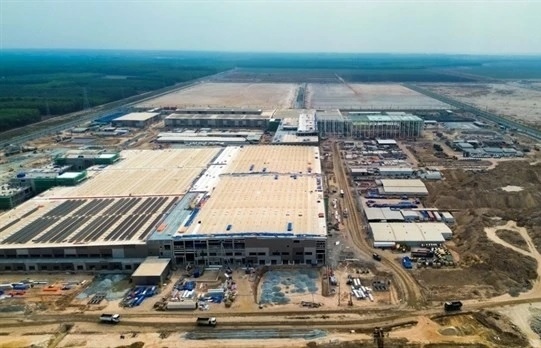Consumer products drive Masan’s growth

The rise in sales was driven by strong growth in Masan Consumer’s core seasonings category and momentum from product launches in convenience foods and instant coffee. The company’s pro forma net profit after tax hit $43.24 million, up 19.8 per cent.
Unfortunately the poor performance of Masan group member Techcombank, an 83.9 per cent drop in profits, resulted in a 21.2 per cent decline in the group’s overall pro forma net profit after tax for the same period.
The group also said its gross margin was strong, 43.1 per cent in the third quarter against 40.6 per cent in the same period last year, thanks to its fast growing consumer business.
Masan Consumer has transformed its instant noodle business into a convenience food platform. It recently launched the Sagami instant noodle brand and it holds market share of 30 per cent after a 10 per cent rise in the third quarter alone.
With the launch of its B’fast rice porridge, Masan Consumer has also breached the breakfast and rice-based markets.
The company’s coffee segment reported revenues of 8 per cent on-year under the Wake Up Saigon and strong Phinn coffee brands.
Masan mining’s Nui Phao project reported strong sales of sodium and copper and the group expects the business to become a strong contributor to the company’s overall growth.
In terms of banking, Techombank deposits rose by 17.8 per cent in the third quarter against the same period last year while credit grew by 14.1 per cent, underpinned by the lender’s prudent lending policies and a conservative loan-to-deposit ratio of 59.7 per cent.
Lower interest rates, prudent provisioning policies and a tougher lending environment resulted in after-tax profits in quarter three to fall to $3.47 million, down 84 per cent against last year.
Techcombank continues to focus on a strong balance sheet, improving efficiency, and controlling costs. Its capital adequacy ratio as of September was 14 per cent, exceeding the 9 per cent required by the State Bank.
What the stars mean:
★ Poor ★ ★ Promising ★★★ Good ★★★★ Very good ★★★★★ Exceptional
Latest News
More News
- Electronic imports exceed 100 billion USD (December 25, 2024 | 17:18)
- Vietnam becomes second biggest garment exporter globally (December 25, 2024 | 17:11)
- Nestlé Vietnam granted golden prize at Vietnam National Quality Awards (December 25, 2024 | 14:05)
- Pathways aplenty for Vietnam’s circular economy transition (December 25, 2024 | 13:00)
- VIMC secures Top 10 Vietnam Gold Star award via its five core values (December 25, 2024 | 11:00)
- Processed coffee in export expansion (December 25, 2024 | 09:33)
- Livestock sector may struggle to conquer $1.5 billion next year (December 25, 2024 | 09:05)
- Domestic firms under duress with new rules (December 24, 2024 | 17:06)
- Tetra Pak’s Direct UHT technology a boon for coconut industry (December 24, 2024 | 08:00)
- Vietnam's GDP growth will lead the region in 2025 (December 23, 2024 | 14:42)


















 Mobile Version
Mobile Version